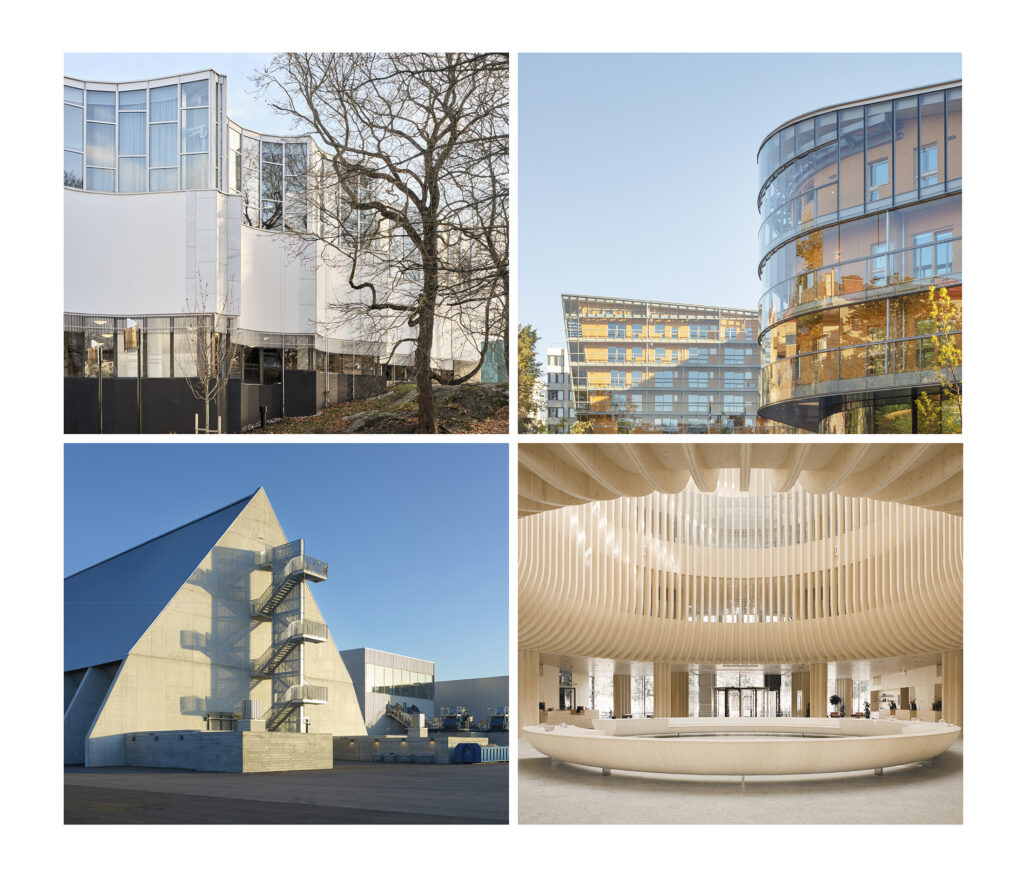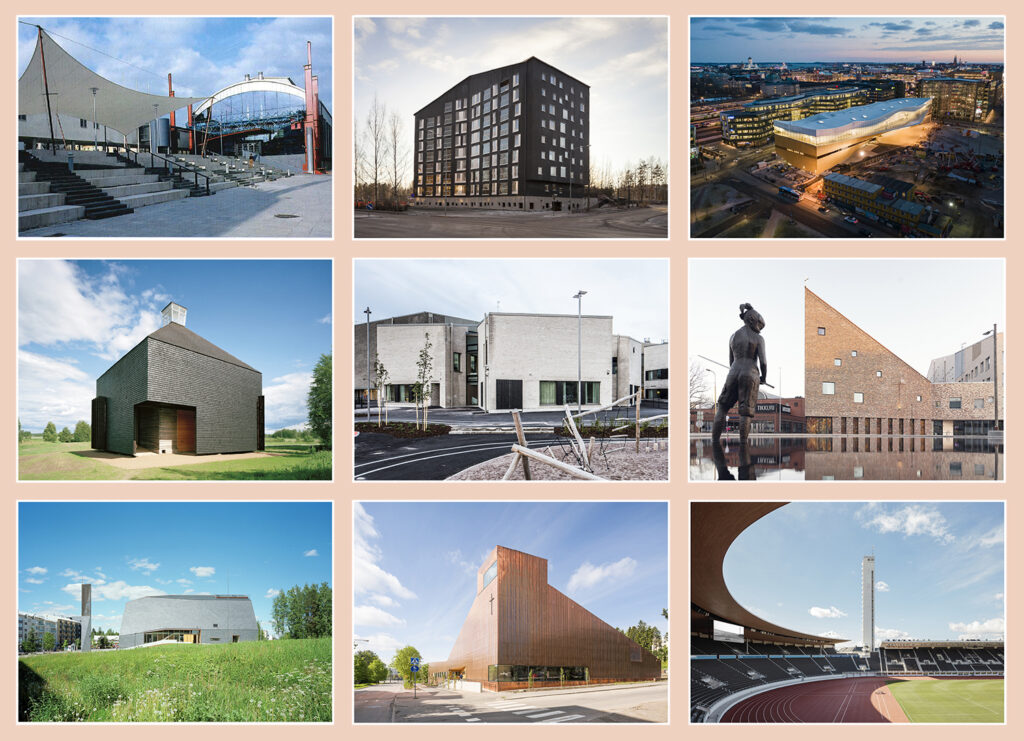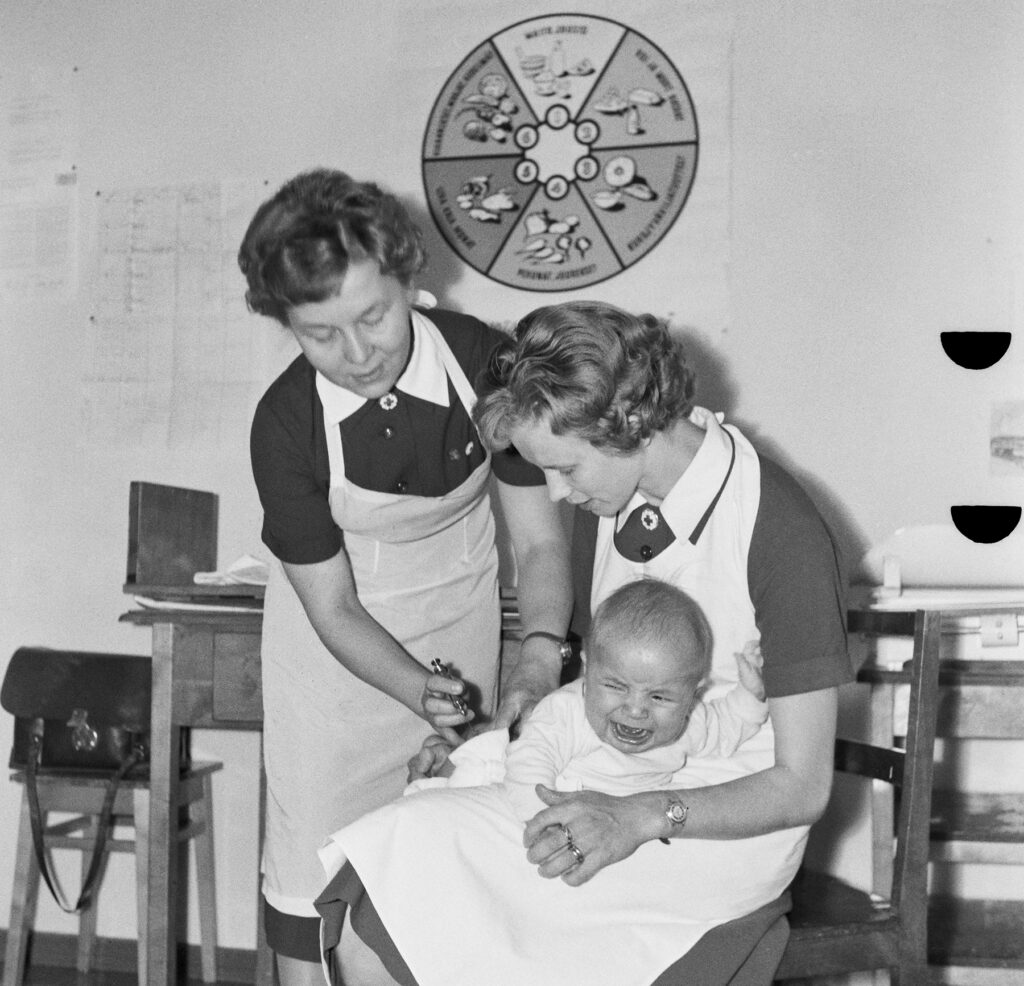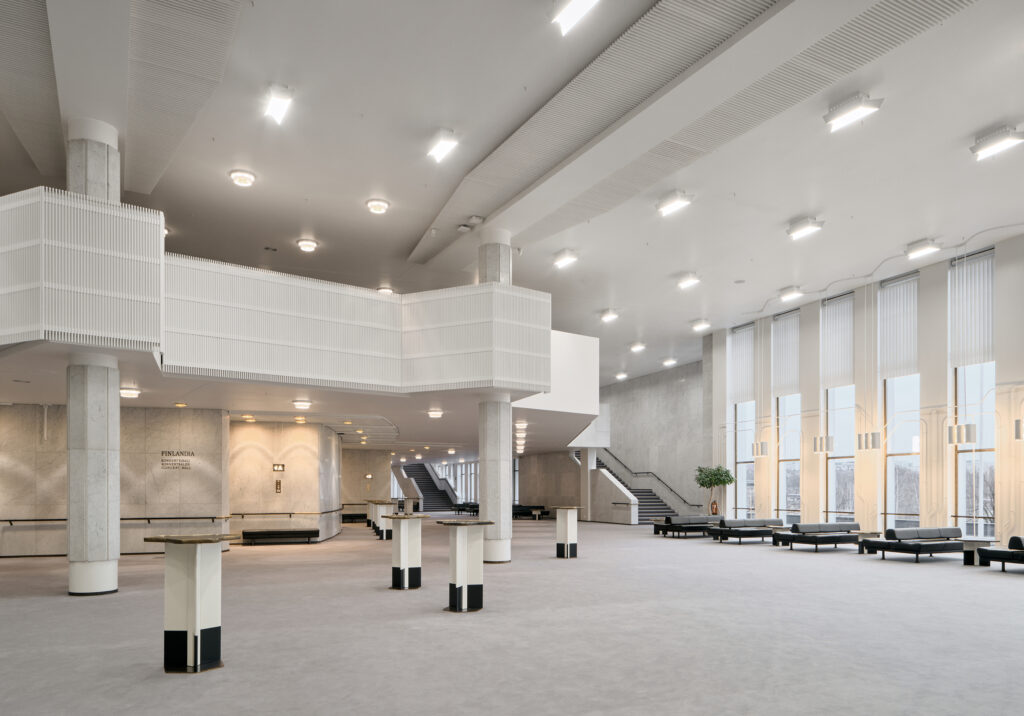What Does the Finlandia Prize Shortlist Reveal About the Current State of Finnish Architecture?

Four new-builds and one refurbishment project are in the running for this year’s Finlandia Prize for Architecture. When it comes to architectural expression, two distinct styles are readily visible.
Published 2.9.2024
The latest Finlandia Prize for Architecture shortlist, announced on 2nd of September, offers, once again, an opportunity to speculate about what the choice of candidates might reveal about the current state and future of Finnish architecture. As usual, the winner will be chosen by a non-architect selector, whose pick inevitably reflects, first and foremost, their own personal likes and private preferences. This year, the selector is journalist Antti Kuronen. The jury charged with selecting the shortlist consists exclusively of professional architects, however, ideally placed to accurately sniff out the choicest architectural gems each year.
In the prize’s decade-long history, a total of 47 buildings have been shortlisted, among them Helsinki University Main Library (Anttinen Oiva 2012), the Löyly building housing a public sauna and restaurant (Avanto 2016), Helsinki’s Central Library Oodi (ALA 2018), Amos Rex Art Museum (JKMM 2018), and Ylivieska Church (K2S 2021). That none of the above projects went on to win speaks volumes about just how unpredictable the selection process can be.
This year’s shortlist, drawn together by Jenni Reuter, Harri Hautajärvi, Kirsi Korhonen and Matti Sanaksenaho, is made up of five candidates: four new-builds and one refurbishment project. What immediately jumps out upon surveying the shortlist is how extremely well the Tampere region has fared this year, having bagged as many as three spots on the list. They comprise Tammela Stadium, the first ever candidate from within the city itself, as well as Lamminrahka School Centre, a joint venture between Tampere and its neighbouring Kangasala and the Hyytiälä Forestry Field Station in Juupajoki. The Helsinki metropolitan area, usually dominantly present on the list, has this year had to settle for just one candidate in the form of the Tapiola Church refurbishment project. The fifth candidate, titled Lastu, is a new building for the Step Education in Järvenpää.

AFKS
(Aarno Ruusuvuori 1965)
Photo: Hannu Rytky
Although much of the development that has taken place in Finland in recent years has been heavily concentrated in the country’s growth centres, of the current crop of candidates, only Tammela Stadium is located in a densely-built urban setting. Representing the opposite end of the spectrum is Hyytiälä Forestry Field Station with its idyllic rural setting. Lastu, for its part, exerts a new and serenely white influence over a somewhat higgledy-piggledy campus, while the new Lamminrahka neighbourhood has gained its first ever landmark in the form of the newly built school. Over in Tapiola, the most visible sign that the garden city’s iconic church has undergone a refurbishment is its new entrance.
Although much of the development in recent years has been heavily concentrated in the growth centres, of the current crop of candidates, only Tammela Stadium is located in a densely-built urban setting.

JKMM
Photo: Hannu Rytky
In the past decade, a handful of architectural practices have managed to bag multiple shortlist spots year after year, and the same trend continues in 2024. Overwhelmingly topping the nominations leaderboard is JKMM, who bagged yet another nomination this year. The shortlist also features two other past winners: last year’s number one, AFKS, and OOPEAA, who won in 2016 with their Puukuokka Housing Block. And then there is Verstas, who have received the nod on more than one occasion too. Happily, we do have a first-time nominee in Raudanko + Kankkunen, whose role here, in light of the other names on the shortlist, is to represent up-and-coming talent.

OOPEAA
Photo: Hannu Rytky
Mass timber, particularly prevalent in Finnish school and nursery buildings, is again a visible presence on the shortlist, thanks to Lastu and the Hyytiälä Forestry Field Station. Both feature visually striking CLT interiors. But given that the main prize last year went to the Martta Wendelin Daycare Centre, on largely the same kind of merits, surely we’re due something new and exciting on the timber construction front. For this, and a host of other reasons, you have to wonder why Monio, a secondary school and cultural centre in Tuusula designed by AOR Architects, which uses laminated logs on a scale that has never really been seen before, has been missed off the shortlist.
And what about the aesthetic side of things? Does the shortlist tell us something about the kind of architecture we can expect to see in the next few years? Not really. As has been the case in recent years, all the shortlisted works represent confident, skillful design that draws on the modernist tradition. In every single one of the projects, the colour schemes, for example, rely on the “authentic” natural colour of the materials used.
When it comes to architectural expression, however, two distinct styles are readily visible. Tammela Stadium and Hyytiälä Forestry Field Station both have the sort of tectonic quality that is rarely seen in Finnish architecture. With its 100-metre long suspended roof structures and sculptural concrete pillars, the stadium is an eye-catching sight, while the forest station’s archetypal form recalls Gottfried Semper’s theories on the fundamental elements of architecture. Here, those elements consist of an elevated platform, solid wood cover and high, pitched roofs. Compositionally, both rely on symmetry while deliberately disrupting it: the stadium’s convex roof is compromised by the high-rise residential buildings towering above it complete with irregular window placement, while at the forest station a series of symmetrical blocks wrap around the outdoor space.
Tammela Stadium and Hyytiälä Forestry Field Station both have the sort of tectonic quality that is rarely seen in Finnish architecture.

Rudanko + Kankkunen
Photo: Kuvatoimisto Kuvio
Lastu and Lamminrahka School Centre represent an entirely different approach. They consist of seemingly randomly interlinking volumes between which a series of open public spaces are created. In Lastu, the whiteness of the roof and external walls both highlight its geometric form and set it apart from its neighbours, while at the school, a series of materials choices have been employed to break up the vast mass.

Verstas Architects
Photo: Niclas Mäkelä
By far the most modernist of the shortlisted candidates is Tapiola Church, an outstanding example of modern sacral architecture in Finland that dates back to 1965. A number of Finlandia Prizes have already been awarded to refurbishments of our modern architectural classics. The question is, will Aarno Ruusuvuori’s ascetic concrete design wow Antti Kuronen like his predecessors were bowled over by the rhythmical majesty of Käärmetalo, the heroic flair of the Olympic Stadium and the light-filled interiors of Jyväskylä University Library? The answer will be revealed in early October, when the winner of this year’s Finlandia Prize for Architecture is announced. ↙
Kristo Vesikansa is the Editor-in-Chief of the Finnish Architectural Review.




